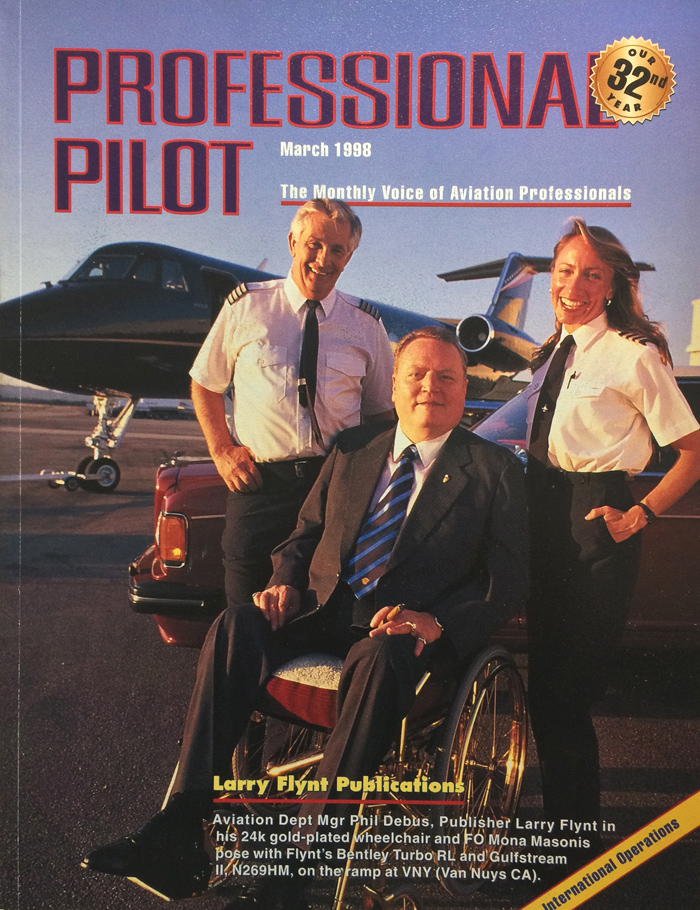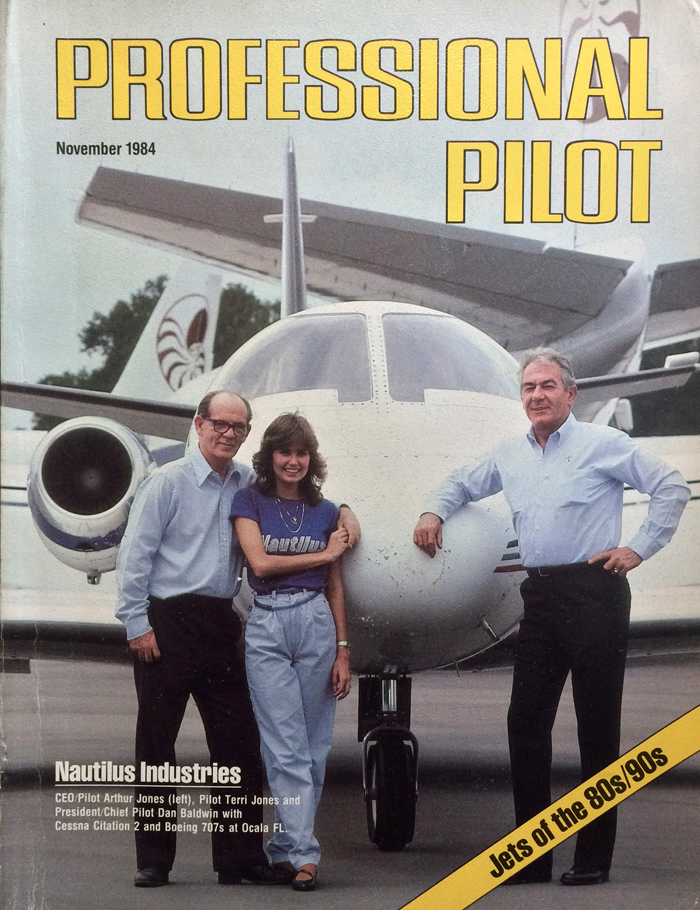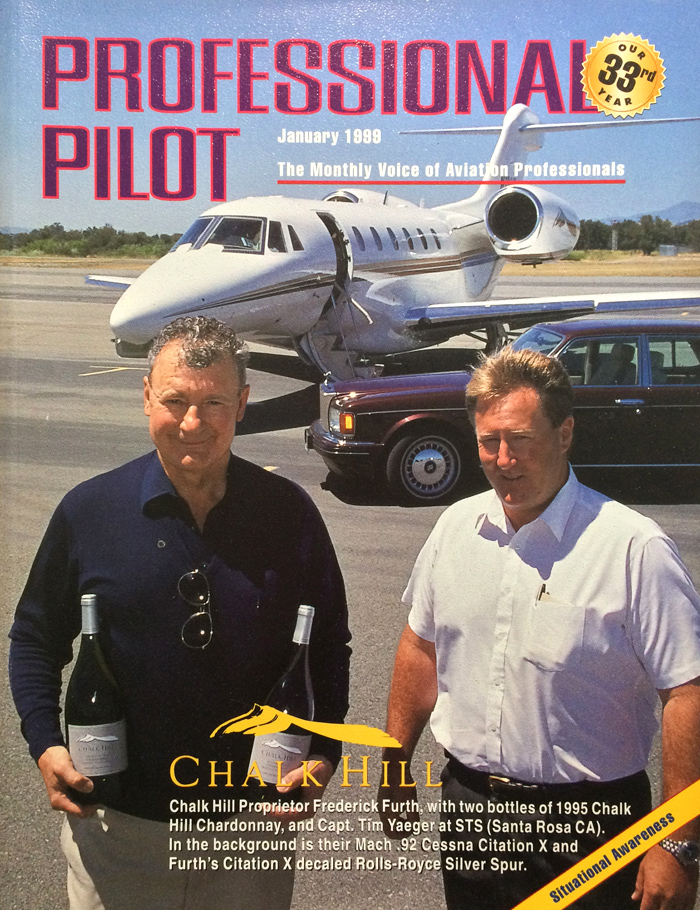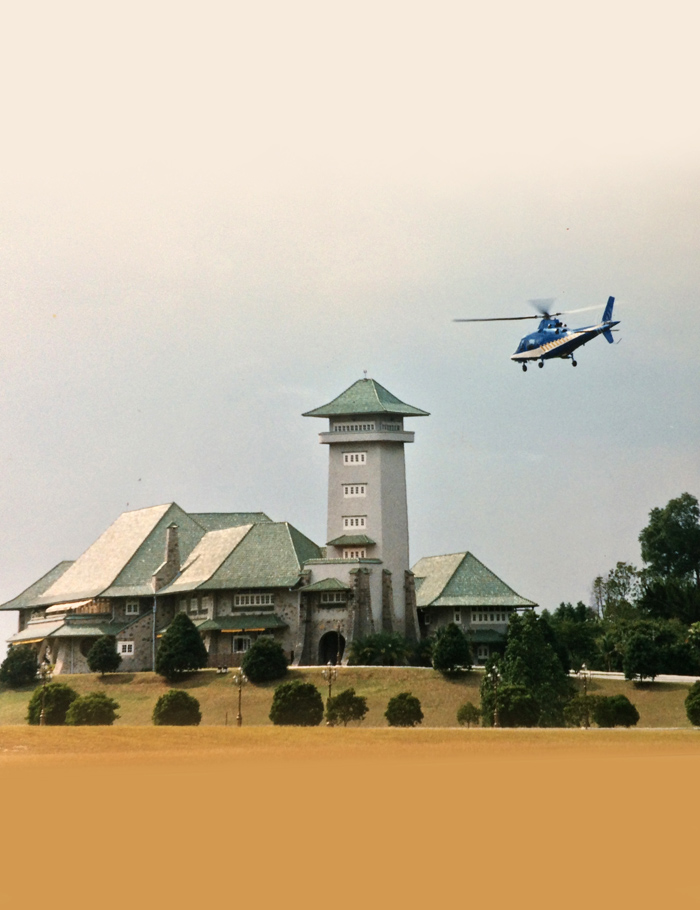Chagoury Group—first flight dept to operate Dassault Falcon 7X
By Grant McLaren
Professional Pilot Magazine September 20007
New bizjet helps international corporation ensure success in business in Africa and around the world.

Chagoury Group flight crew the boss to and from between Europe, North America, the Middle East and Africa
With business activities primarily in western and central Africa—flourmills in west Africa, assorted glass making and furniture manufacturing plants, hotels and massive Nigerian real estate developments—the Chagoury Group has benefited from corporate aviation since the late 1970s.
Beginning with a British Aerospace BAe125 Srs 400 in 1979, the flight department transitioned up—through a Dassault Falcon 200, Falcon 50, Falcon 50-4 and Falcon 900C—to today’s corporate fleet consisting of the world’s first corporate Falcon 7X backed up by an LBG (le Bourget, Paris, France)-based Falcon 50. Five pilots and a flight attendant manage global flight ops that run between 350 and 400 hours per aircraft per year. On order is a Falcon 900EX, to replace the Falcon 50-4 in mid- 2008, and a second Falcon 7X to augment corporate lift in 2011.
“In the early days, corporate aircraft made it much easier for us to travel to and within Africa,” says CEO Gilbert Chagoury. “Today, company aircraft make it practical to react quickly to business opportunities worldwide. Aircraft are business tools for us and they’ve made it possible to take advantage of opportunities we might otherwise miss. Within Africa, particularly, corporate aircraft are a necessity – but anywhere in the world these days you cannot count on commercial service for last-minute travel.”
Parc Aviation, registered in Bermuda, owns and operates the Falcon 7X while Blue Heron Aviation owns and operates the Falcon 50-4. Both entities are satellite companies of the Chagoury Group. Captains Patrick Cambot and Eric Mesnil, First Officer Frank Belougne and Flight Attendant Evelyne Charmeau support Aviation Dept Mgr André Romary. An additional pilot is to be hired later this year.
Romary, who left the French Air Force to join the Chagoury Group 10 years ago, is happy with his new Falcon flagship. “We put 75 hours on the 7X over the first 6 weeks without a single cancellation due to a mechanical problem. The other day we flew 11 hr 35 min nonstop LBG–LAX (Intl, Los Angeles CA) at Mach 0.80 and up to FL 470, with 5 passengers, landing with over 3000 lb of fuel. For our travel needs the 7X is paradise, and fuel burn, at equivalent weight and speed, is even lower than the Falcon 900C. In a few weeks we plan to fly to PEK (Beijing, China) via ANC (Anchorage AK), and we expect to return PEK–LAX nonstop.”
Chagoury Group business expansion is in high gear. Company aircraft not only help manage the group’s west African business franchises but facilitate opportunities worldwide. Gilbert Chagoury is a multifaceted individual, the UNESCO ambassador for St Lucia, the economic advisor to the Republic of Benin and a philanthropist. A gallery at the Louvre museum in Paris is named after him and his wife. Chagoury’s additional travel requirements will take the new Falcon 7X to SLU (Castries, St Lucia)’s 5735-ft strip as well as to COO (Cotonou, Benin).
Chagoury Group crews enjoy an unusual corporate travel schedule, being away from home for more than 6 months a year. Crews may spend up to 4 weeks on the ground at LOS (Lagos, Nigeria), are frequently in BEY (Beirut, Lebanon) and typically spend 3–4 months a year in the Los Angeles area, where Chagoury keeps a hilltop villa.
“We’re on call 24/7/365, do not take vacations, and stay with our airplanes,” says Belougne, who keeps a personal car in the Los Angeles area. “The schedule differs from my previous role flying Mirage 2000 combat missions – at a moment’s notice we may leave for Los Angeles, Beirut, Lagos or Singapore.”
Building a business
Gilbert Chagoury was born in Nigeria to immigrant parents from northern Lebanon. In 1971 he started building an industrial empire across west Africa beginning with flourmills in Nigeria. Today, the Chagoury Group is one of the leading corporations in Nigeria, with manufacturing, construction, industrial, hotel, high-tech and real estate development activities and an African workforce numbering in the tens of thousands.
“We bought our first corporate aircraft in 1979 to enhance mobility and ease efficiency of travel between Europe, the Middle East and Africa,” recalls Chagoury, who used the aircraft primarily to commute to Nigeria, Benin and Niger. “In those days you could only fly from Beirut to west Africa via Europe – a potential 14-hour journey. Flying commercially within Nigeria was next to impossible with 3 to 4-day waits to get airline seats. From the day we bought our Hawker we discovered that corporate aircraft are a necessity, not a luxury. Company aircraft made it possible to expand our business much faster than would be possible otherwise.”
Desiring additional range, the Chagoury Group upgraded to a Falcon 200 for nonstop ops from BEY to Europe and occasional sorties to North America. Chagoury recalls the Falcon 200 as a beautiful aircraft but not very mechanically impressive and prone to engine problems. After returning the aircraft, and temporarily disbanding his flight department in favor of 300 hours of charter from Dassault, Chagoury reactivated inhouse corporate flying and bought a Falcon 50. This was upgraded to a newer 3300-nmcapable Falcon 50-4 repowered with Honeywell TFE 731-4-1Cs and updated with Collins Pro Line 4 avionics. In 1999 the group acquired a 4000-nm Falcon 900C while keeping the Falcon 50-4.
“The Falcon 50 is an exceptional aircraft, but the 900C gave us more comfort, range and better global capabilities,” says Chagoury. “At the time, a 900EX cost $4.5 million more than the 900C but both aircraft required fuel stops on longer missions to North America, South America and Asia, so the lower-priced 900C made sense for us.”
Prior to ordering the new Falcon 7X, in 2001, Chagoury and Romary evaluated other corporate options. “I’ve always liked Falcon products,” he says, “and the 7X is an advanced-technology, very efficient aircraft [and] it burns up to 45% less fuel than equivalent longhaul options. Five years ago fuel price was not a large part of corporate operations, but at today’s prices it’s become a more important element.”
Today, the Chagoury Group uses the Falcon 7X to pursue business worldwide. The Falcon 50-4, operating primarily within the Middle East and Europe, will be upgraded to a 4500-nm Falcon 900EX EASy in early 2008. A second 7X is on order, with delivery scheduled for Feb 2011.
Pilot lifestyles
The Chagoury Group maintains a strong, close relationship with its corporate crews. “I fly on the airplane – and I paid for it – but our flightcrews are the real owners of the aircraft,” says Chagoury. “They’re part of our group, part of our family, and we could not have this sort of relationship with contract pilots.”
Chagoury has always hired pilots and crews with military backgrounds. “Military pilots come with a lot of discipline and they’re trained with security as a numberone issue,” he says. “We’ve always done well with ex-Air Force pilots and we’re proud of their former accomplishments.”
Romary joined the French Air Force in the early 1960s and was an air show demo pilot, flying Dassault Mirage IIIEs and Anglo-French SEPECAT Jaguars, before moving to the corporate world. Cambot, a former French Navy pilot, flew carrierbased Dassault Etendard IVs, followed by a stint flying Canadair CL415 water bombers, before joining the Chagoury Group in early 2007. Belougne joined the group in 2002, directly from the French Air Force, after flying Mirage 2000s. Even Charmeau hails from the Mirage 2000 technical support side of the French Air Force. Romary says the flight department has a free hand in recommending and purchasing aircraft equipment, and there’s never a question if a member of the flying team recommends canceling a trip for weather or safety-of-flight reasons. On the road, Chagoury Group pilots live well and, on occasional longer missions, have the opportunity to bring a spouse along – either aboard the company jet or commercially.
This, however, is a true on-call corporate flight department, and crews must be ready and willing to fly at short notice. There’s no scheduled free time or vacation time, and crews are on the road, away from home, most of the year. Romary recalls being in the south of France and receiving a call at 1115 for a planned flight departure at 1315 from LBG. “I changed, drove very quickly to a local military airport and caught a shuttle flight to LBG, where I arrived a minute before the doors closed on our aircraft.”
Belougne remembers flying his wife from Paris to Los Angeles for 2 weeks so that she could be with him while he was “on hold” in southern California. “But then a short-notice departure came up to Paris. As my wife landed in Los Angeles we took off to Paris and I didn’t see her for another week.” While crews are often permitted to return home to Paris from Los Angeles for Christmas, they generally need to be back, and flight ready, by Dec 26.
“We live with our cell phones and passports and we’re always ready to go,” says Romary. “While some trips are scheduled months in advance, we must be ready to fly within 3 hours’ notice. We cannot leave our phones for even one hour – a trip to Beijing or Paris may come up.”
Crew scheduling is somewhat better today, with 5 pilots for 2 company aircraft. Cambot maintains dual qualification on the 7X and Falcon 50-4, for added crew flexibility. Belougne will do his Falcon 900EX EASy type rating soon in order to work the 7X/900EX fleet mix early next year.
Romary is looking to hire another first officer later this year, when Belougne upgrades to captain. An ideal candidate, says Romary, would be either a younger ATPqualified 1000-hour TT pilot or a close-to-retirement pilot, as this position calls for the new pilot to maintain first officer status for 3–4 years. Personality is an important hiring qualification. “In this flight department we spend our lives together,” says Romary, “but even the French can start to fight after a while – it happens.”
Flight ops
Chagoury Group’s 7X is a state-ofthe- art machine. The EASy flightdeck features Honeywell head-up display (HUD), graphical weather datalinks and Jeppesen electronic charts, with Honeywell enhanced flight vision system (EFVS) on order. The all ex-military flightcrew like the 7X’s sidestick control and HUD, says Belougne. “We’re all former fighter pilots, accustomed to HUD and sidesticks, so the transition was easy. Adapting to the sophisticated EASy flightdeck involved more than 3 weeks of initial training and was more difficult!”
Two years ago the flight department transitioned the 900C to 100% electronic charts, using portable side-mounted tablets, and no longer carries paper charts. In the passenger cabin, the 7X features Rockwell Collins Airshow, Rosen flat panel monitors, Honeywell satcom and 6 ft of additional length over the 900C. “The 7X galley is slightly larger and the aft lav area is more spacious,” says Charmeau.
For international ops the Chagoury Group uses Dassault Falcon Jet flight planning services, but takes advantage of Air Routing Intl support services for missions to China. The 7X is not only a 5995-nm performer (climbing direct to FL 400 or 430 at MTOW) – it’s more powerful on climb and burns less fuel at altitude than the 900C at similar weights. Whereas Falcon 50-4 VNY (Van Nuys CA)–PEK ops required tech stops at ANC (Anchorage AK) and PKC (Petropavlovsk, Russia), the 7X will make a single ANC tech stop outbound, with a nonstop return under most conditions.
“The 7X gives us more flexibility,” says Chagoury. Sometimes I’ll call our pilots and say ‘Tomorrow we’ll go to New York.’ I would not want to go the next day if I had to travel commercial.”
On shorter 3 hr 30 min flights from LBG–BEY, or even the 8-hr 55 min run from LIT (Little Rock AR) to LBG, the 7X cruises at Mach 0.85. “We’ve reduced travel time from LBG–BEY by close to half an hour with the 7X over the 900C, and we save 4 hours flying the 7X nonstop LBG–LAX. This makes for a more manageable duty days,” says Belougne.
While services and handling at BEY are excellent, security risks are such that the corporate plane is routinely repositioned off field. “There’s a risk of metal falling from the sky at BEY,” explains Romary, “so we reposition the 7X to either ATH (Athens, Greece) or LCA (Larnaca, Cyprus), even if it’s just for a night.” With a wingspan 22 ft 6 in wider than the 900C, parking for the 7X may be problematic at smaller airports like SLU. And the requirement to run the APU longer, due to fly-by-wire (FBW) system needs, is somewhat limiting at NCE (Côte d’Azur, Nice, France), as the airport imposes strict APU limits. Catering can be challenging in remote regions of central Africa – or at LIT for that matter, says Charmeau – and is often sourced from hotels or restaurants. Charmeau specializes in salads and fresh fish entrées at altitude. Full onboard meals are orchestrated even on shorter legs such as LBG–BQH (Biggin Hill, England).
In terms of maintenance, the 7X is even more user friendly than the former 900C. Major check on the 7X, requiring 1-week downtime, occurs at 9 months, versus 6 months on the 900C. The flight department subscribes to Falcon Care for the 7X as well as CAMP maintenance management services. Pilot training for the 7X is accomplished at MMU (Morristown NJ) or BQH, and for the Falcon 50/900C and 900EX EASy at LBG. Product support, says Romary, has been excellent from Dassault and Honeywell and from Pratt & Whitney Canada on the PW307As.
Future directions
The Chagoury Group plans to continue growing with strategic application of aviation assets. With next year’s upgrade from the Falcon 50-4 to a Falcon 900EX EASy, the group will enjoy even better global access opportunities. A further pilot, to be added later this year, will help flightcrews achieve the elusive goal of at least some scheduled time off.
Chagoury sees strong future business opportunities in Africa, and particularly in Nigeria. “Between now and 2020 Nigeria will become one of the most important economies in the world,” he says. “And if Nigeria develops as it should, all of west and central Africa will follow because Nigeria is the economic driver for the region. India and China will continue to develop economically and they’ll become wealthy like Europe. I’d prefer, however, to see the US maintain global political and economic leadership as the world economy seems to function best with strong US leadership.”





